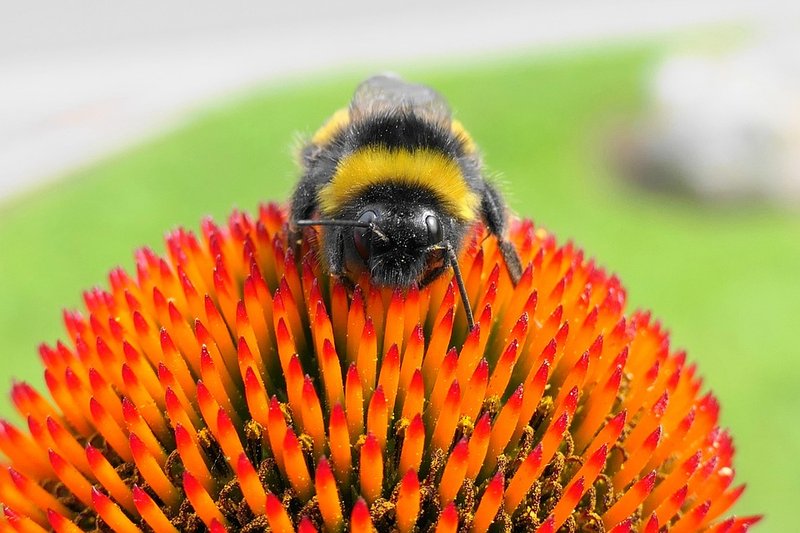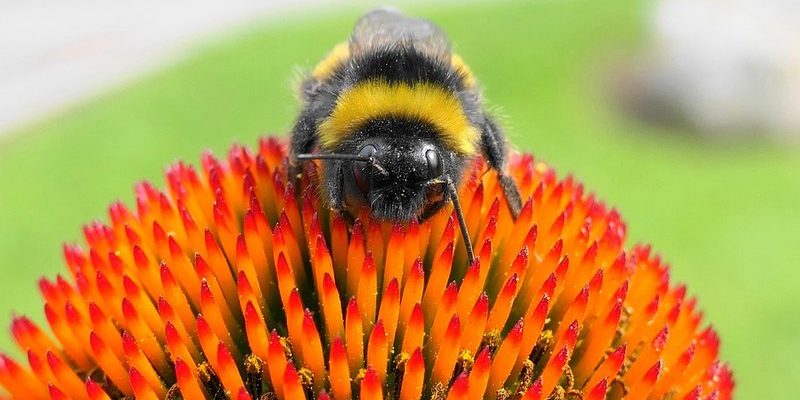
Bumblebees are like the busy workers of nature, hopping from flower to flower, gathering nectar, and spreading pollen in the process. Without them, many fruits and vegetables wouldn’t flourish, and that could have a huge impact on our food supply. Let’s dive into the fascinating world of bumblebees and explore not just their role in pollination, but also some of their other super important jobs.
What is Pollination?
Pollination is a vital part of a plant’s life cycle. It’s the process where pollen from the male parts of a flower (the anthers) moves to the female parts (the stigma) of the same or another flower. This transfer can happen through various means, but bumblebees are particularly effective at it. Picture bumblebees as nature’s delivery service, expertly carrying pollen on their legs and bodies as they flit from bloom to bloom.
When bumblebees land on flowers to collect nectar, they unintentionally pick up tiny bits of pollen. As they continue their journey, they drop this pollen off at other flowers, facilitating fertilization. This is what helps create seeds, fruits, and new plants. Isn’t it amazing to think that these tiny creatures are responsible for helping to grow the food we eat and the beauty we enjoy in our landscapes?
The Essential Role of Bumblebees in Agriculture
Bumblebees are crucial players in agriculture, and the numbers back it up. Studies show that these buzzing buddies enhance crop yields significantly. They’re especially great at pollinating crops like tomatoes, blueberries, and peppers, which rely heavily on their unique abilities. This is because bumblebees have a special trick: they can “buzz pollinate.” This means they vibrate their bodies to shake loose pollen from the flowers, a technique that many other pollinators can’t master.
Farmers and gardeners often invite bumblebees to their fields, knowing that they can boost production. Not only do these bees help increase the quantity of produce, but they also enhance the quality. Fruits and vegetables pollinated by bumblebees tend to be larger and more flavorful. Imagine biting into a juicy, sweet tomato! All thanks to these tireless workers buzzing around.
Bumblebees and Biodiversity
Bumblebees don’t just help us; they support entire ecosystems. They pollinate wildflowers and native plants, which are essential for maintaining biodiversity. When these plants thrive, they create habitats for numerous other species—from butterflies and birds to small mammals. It’s like a big, interconnected web where every strand is important, and bumblebees are key players in making sure that web stays intact.
Without bumblebees, many wildflowers could struggle to reproduce, leading to declines in plant populations. This, in turn, can disrupt the many animals that depend on those plants for food and shelter. Here’s the thing: biodiversity is crucial for a healthy environment. The more diverse our ecosystems are, the more resilient they become to changes and stresses, like climate change and disease.
The Importance of Nesting Habitats
While we often focus on bumblebees’ role in pollination, their nesting habits are just as fascinating and important. Bumblebees typically build their nests in the ground, often in abandoned rodent burrows or under dense vegetation. They prefer areas that provide some shelter and privacy. The nest is often home to a queen and her offspring, where they work together to raise the next generation of bees.
Creating suitable nesting habitats is vital for bumblebee survival. As urban areas expand and landscapes change, their natural habitats can disappear. Encouraging bumblebee-friendly environments with plenty of flowering plants and suitable nesting sites is essential to supporting their populations. You might be wondering how to help—planting native flowers, leaving some areas of your garden a bit wild, or even building a bee hotel can be great steps.
Threats Facing Bumblebees
Despite their important roles, bumblebees face numerous threats that jeopardize their survival. One of the biggest problems is habitat loss due to urban development and agricultural practices. Pesticides also pose serious risks, harming bees and disrupting their ability to pollinate. Climate change is another formidable opponent, altering blooming seasons and pushing bumblebees to adapt quickly.
Recognizing these threats is crucial for conservation efforts. We can take action to protect bumblebees by promoting sustainable farming, reducing pesticide use, and creating more green spaces. Every little effort counts! Even making small changes in your garden can create a safe haven for these buzzing friends. Together, we can help ensure bumblebees thrive for generations to come.
How to Attract Bumblebees to Your Garden
If you want to invite bumblebees into your garden, it’s easier than you might think. Here are some simple tips to create a bumblebee-friendly environment:
- Plant Native Flowers: Choose flowers that bloom at different times throughout the growing season to provide continuous food sources.
- Avoid Pesticides: Instead of harmful chemicals, opt for natural pest control methods to keep bumblebees safe.
- Provide Nesting Sites: Leave some areas of your garden undisturbed or build bee hotels to give bumblebees cozy places to nest.
- Group Plantings: Plant flowers in clusters rather than scattered, making it easier for bumblebees to find food.
Creating these simple changes can encourage bumblebees to visit and thrive in your garden. Remember, every bumblebee counts!
Bumblebees are more than just cute creatures buzzing around the garden; they are essential to pollination and the health of our ecosystems. From enhancing agricultural yields to supporting biodiversity, these fuzzy friends play a vital role in our lives. By understanding their importance and taking steps to protect them, we can ensure they continue to thrive.
Next time you see a bumblebee, take a moment to appreciate the hard work it’s doing. They are tiny heroes, and by doing our part, we can help maintain their populations and the beautiful ecosystems they support. Let’s celebrate our buzzing buddies and all the good they do for the world!

